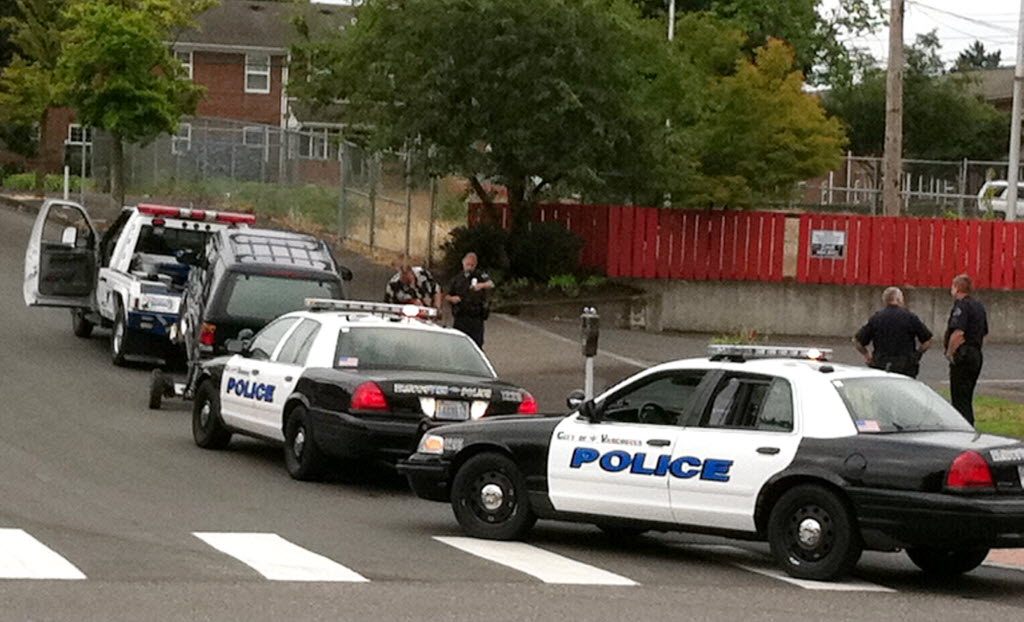Violent crimes rose 2.3 percent in Vancouver in 2010, according to the FBI, the second yearly increase in a row.
The total of violent crimes increased to 671, 15 more than 2009. There were no murders reported in 2010; six were committed in 2009.
Reported rapes also dropped by five to 112 in 2010.
Robberies were up to 173 from 158 in 2009.
Aggravated assaults also rose to 386 from 375 in the previous year.
WASHINGTON — Violent crime dropped 6 percent in 2010, marking the fourth straight year-to-year decline, while property crime was down for the eighth straight year, falling 2.7 percent, the FBI said Monday. The data includes only crimes reported to authorities.
Nationwide, there were an estimated 1.2 million violent crimes in 2010 and an estimated 9 million property crimes.
Violent crimes rose 2.3 percent in Vancouver in 2010, according to the FBI, the second yearly increase in a row.
The total of violent crimes increased to 671, 15 more than 2009. There were no murders reported in 2010; six were committed in 2009.
Reported rapes also dropped by five to 112 in 2010.
Robberies were up to 173 from 158 in 2009.
Aggravated assaults also rose to 386 from 375 in the previous year.
The rate for murder and non-negligent manslaughter fell to 4.8 per 100,000 population, less than half what it was two decades ago. The last time that rate was lower was in 1963, according to FBI crime data.
An aging population, better policing and continued high rates of imprisonment for criminals are helping to drive down crime rates, criminologists say.
Robbery fell 10 percent, rape dropped 5 percent, and murder, non-negligent manslaughter and aggravated assault fell more than 4 percent.
Each category of property crime offenses decreased in 2010. The largest decline, 7.4 percent, was for motor vehicle thefts. Burglaries decreased 2 percent and larceny thefts declined 2.4 percent.
“The last thing we should do is get complacent and say `mission accomplished,’ and so let’s transfer resources away to other areas,” said James Alan Fox, a criminologist at Northeastern University. “You don’t solve the crime problem. You only control it. Without sufficient support for policing and crime prevention, the numbers can go back up.”
Attorney General Eric Holder said federal prosecutors and agents have worked with state and local law enforcement to increase community participation in protecting neighborhoods. On a related front, he said that law enforcement agencies have targeted gang leadership in communities in states from Florida to New York, and from Tennessee to North Carolina.
Since the economy turned downward in 2007, the expectation had been that crime would increase with higher unemployment.
For decades, a connection between the two has been a commonly held assumption — though it eventually came under fire. For example, the Joint Economic Committee in Congress issued a report in 1984 saying that a 14.3 percent increase in joblessness in 1973-74 led to a 1.7 percent increase in homicides. A preface by then-Sen. Hubert Humphrey, D-Minn., said in a 1976 report by the same committee that a 1.4 percent rise in unemployment during 1970 was “directly responsible” for 1,740 additional homicides.
Among the detractors of the connection theory was noted criminologist James Q. Wilson, who in 1985 wrote that “even the strongest evidence of a crime-economy link does not explain more than a very small portion” of the year-to-year changes in crime rates.
The figures for 2010 are once again undercutting the idea of such a link.
“The connection between crime and the economy is an illusion held by people reading too many French novels. They remember Jean Valjean stealing a loaf of bread to feed his sister’s starving children and assume the same thing should be going on in the U.S. today,” University of Cincinnati professor John Eck, who teaches criminal justice research methods, said Monday.
Eck suggested that one important factor in driving down crime rates is improved policing practices that focus on high-crime locations in which “you are denying the criminal the ability to attack targets. Virtually every large city is doing something.”
Eck said since the 1970s, property crime has been going down and “probably the best explanation is that people are getting better at protecting their belongings, with all the simple devices industry has made to help — from car burglar alarms to better bicycle locks.”
Last week, the U.S. Bureau of Justice Statistics reported that the number of violent crimes fell by a surprising 12 percent in 2010 and that there were 3.8 million violent crimes last year.
The Justice Statistics survey of households includes crimes both reported and not reported to law enforcement. In contrast to the household survey, the FBI report includes homicide, arson, commercial crimes and crimes against children younger than 12. The FBI report captures only crimes reported to law enforcement, while excluding sexual assaults and simple assaults.



